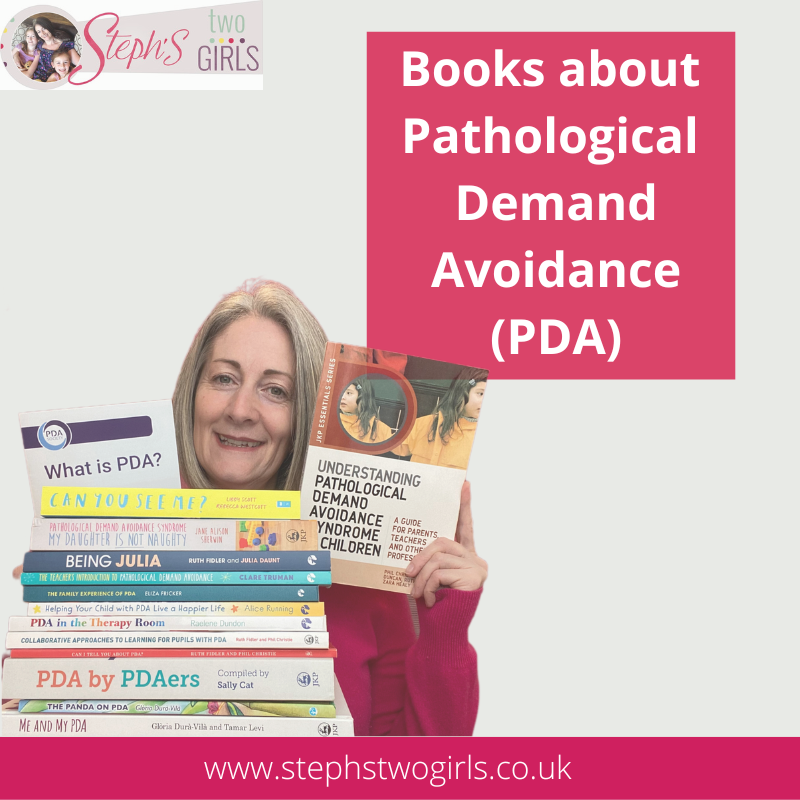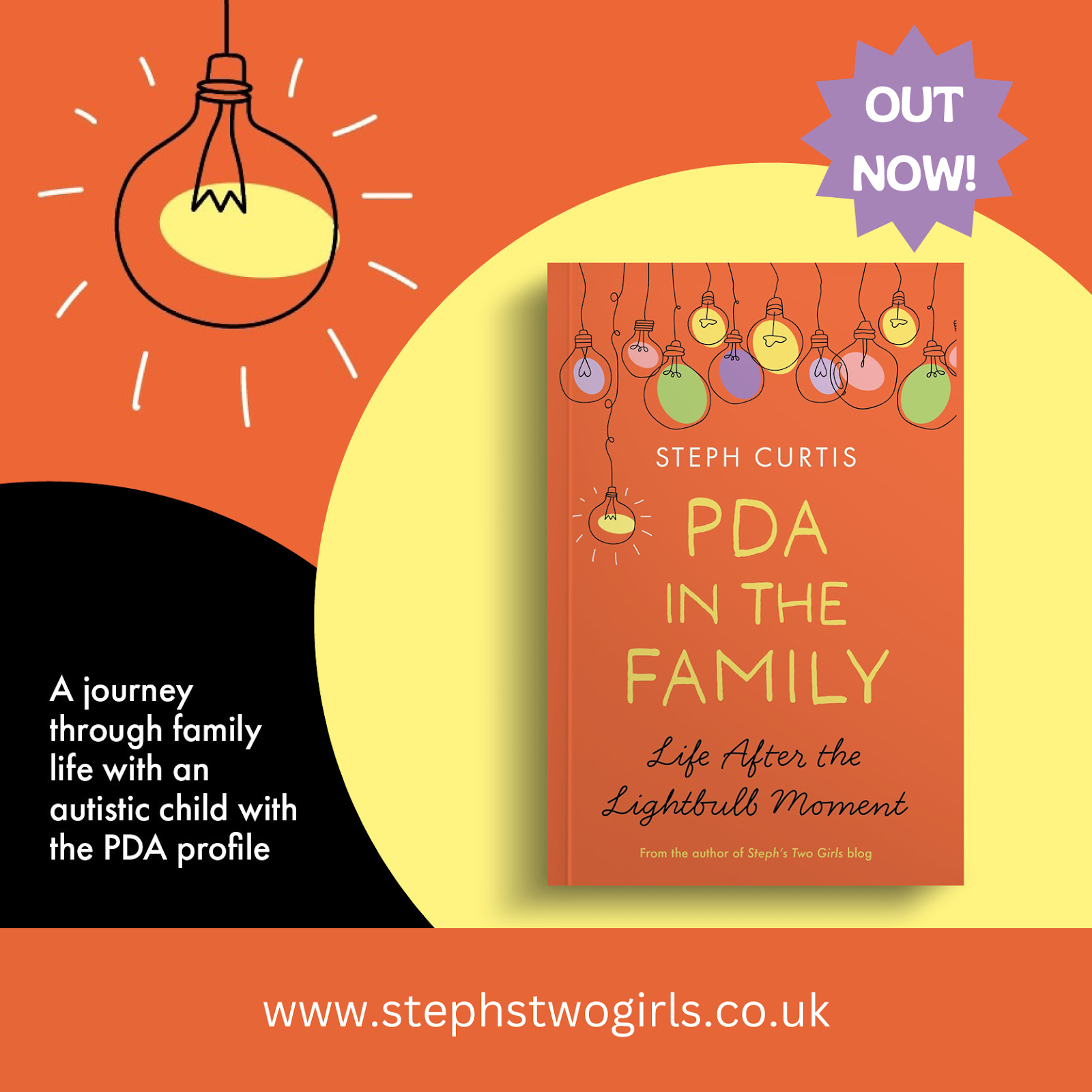For reasons which will become clear in the next couple of paragraphs, I was excited when I was asked to review a new book called Understanding ADHD in Girls & Women.
Despite being surrounded by all things autism for the last twelve years thanks to our younger daughter's autism diagnosis at the age of 2, ADHD (Attention Deficit Hyperactivity Disorder) was something I didn't understand much about before this year. I knew that it was a diagnosis often associated with autism, and without giving it too much thought, I naively believed that it was seen most often in younger boys who displayed hyperactive behaviour.
Years ago we briefly wondered if our younger daughter might have ADHD, but after completing the Conners questionnaire when she was around 6 years old it was determined that she wouldn't meet the criteria for a diagnosis. I still had my doubts but felt that the autism diagnosis was more relevant at that time and that PDA (Pathological Demand Avoidance) described her needs more fully.
To follow me on other social media channels, you can find me at the following links or click the icons below!








Fast forward to this year; our eldest daughter received a diagnosis of ADHD at the age of 15. This was a surprise and not something we had considered for her, and yet once I started researching ADHD, all the signs were there. One of the articles I first came across stated how ADHD is often missed in girls. In fact undiagnosed ADHD often leads to anxiety and depression being diagnosed first, as they can be resulting symptoms of not understanding what is going on with the brain.
Over the years the media narrative on ADHD has focused on younger, 'wild' boys having ADHD, and also on the topic of medication for ADHD (see this post for a book about ADHD medicine). It is definitely time that a light is shone on how ADHD can affect women too. Many girls, and some boys, learn how to mask well so that their outward behaviour doesn't reflect the turmoil going on in their mind, but just because others don't see it, doesn't mean that it isn't there.
On a whole separate note, many children, both boys and girls, have behaviours which are put down to 'naughtiness' or a lack of parental control, when in fact if ADHD was considered, the reasons for the behaviour would be better understood and helped. This aligns very closely to the world of PDA and the similarity of ADHD symptoms and PDA characteristics is something I'm particularly interested in at the moment, but that's a whole other post for another time!
Understanding ADHD in Girls & Women
This book is a comprehensive, collaborative effort written by a group of adults with many years of experience in the field of ADHD - Clinical Psychologists, Consultant Psychiatrists, Mental Health Nurses, Consultant Neurologist, ADHD coach and a Head of Education Law at a Top 100 London law firm. It is aimed at parents, professionals, women and older girls.
Before this book, there was little published about ADHD in females, and barely anything with a UK focus. The book consists of over 330 pages with lots of helpful information throughout, but arguably the most important chapter is saved for last. A collection of female voices; young girls, teenagers and adults, some mums and graduates, all sharing how ADHD has affected them. Great insights which could definitely provoke others to think more closely about their children, those they teach or even about their own childhoods.
The other chapters cover all the big discussion areas and I'll attempt to summarise these below:
1. Introduction: Girls and Women have ADHD too!
This chapter has been written by Dr Joanne Steer, a clinical psychologist with over 16 years' experience of working with children and adolescents with mental health difficulties. Prevalence of ADHD is discussed initially, followed by screening tools and diagnostic criteria then behavioural presentation before touching on assessment in adulthood, treatment and education.
2. Assessment of ADHD in Girls: Unlocking hidden superpowers through understanding ADHD
More detail about the screening tools for ADHD is given in this chapter, and it also explains more thoroughly what is involved in the whole assessment process. The symptoms of inattention, hyperactivity and impulsivity are explored along with the idea that parents are often providing a lot of scaffolding for their girls with ADHD and this may lead to symptoms being hidden. There are also plenty of tips on how to help in areas such as sleep difficulties, physical health peer relationships, social skills and school settings.
3. Treatment of ADHD in girls
Chapter 3 is written by Professor Peter Hill, a professor and consultant in child and adolescent psychiatry who has held senior posts at Great Ormond Street Hospital and St George's, University of London. He has over 40 years' experience in treating ADHD and has lectured on this topic worldwide - he is the author of the more detailed book The Parents' Guide to ADHD medicines. In this chapter he presents information on education for the girls with ADHD themselves, as well as for parents, schools and siblings. He goes on to look at psychological or psychosocial treatments, diet and exercise, with some real life examples for problem solving, and then briefly covers the topics of medication, puberty and eating.
4. Mental Health Cormorbidities in girls with ADHD
This chapter looks at the negative impact on health and wellbeing often caused by ADHD. Anxiety issues, depression, behavior, eating disorders, bipolar and psychosis are all discussed, with plenty of tips on how to help provided.
5. Navigating the education system with an ADHD girl
Written by a top education lawyer, this chapter is an in-depth look at all aspects of the education system when it comes to providing the right support. There is plenty of extremely helpful detail about the legal side of SEN support and EHCP plans, and an extensive list of ideas for reasonable adjustments for ADHD in school.
6. Too little too late? Coaching girls with ADHD
A real life example is used to demonstrate most of chapter 6, which discusses how to approach coaching with girls with ADHD, and how coaching can help.
7. Assessment of ADHD in women
This chapter provides an overview of the clinical assessment process for female adults who suspect they may have ADHD. It considers symptoms, components of an assessment and other factors such as hormones and the importance of family history.
8. Treatment of ADHD in women
'Attention deficit hyperactivity disorder is one of the most misunderstood, underdiagnosed and yet treatable disorders in psychiatry' is the opening sentence of this chapter. Both drugs and non-pharmacological treatments are acknowledged and given credit.
At a special launch event for this book, some great insights about females with ADHD were shared and I think they are worth passing on here. In the UK, for every 1 female diagnosed with ADHD, there are 6 males - but in adulthood there is a shift to a ratio of 1:1, suggesting that girls are often missed in childhood. Girls are less likely to be referred for assessment, more likely to go undiagnosed and therefore more likely to end up with diagnoses of mental health conditions. Females are reported to have fewer obvious symptoms of hyperactivity and impulsivity and more of inattention compared to males. Hyperactivity and impulsivity is often present but expressed in a different way - a girl's mind might be constantly on the go rather than physical restlessness. Girls tend to have fewer learning problems and show their differences less in school, they often aren't disruptive and they put a lot of time and effort into hiding the symptoms (masking). When girls are missed, this can lead to years of untreated ADHD and this can have a huge impact on self esteem and overall mental health.
In case it can help any more girls be seen and understood, I am keen to write and talk more about ADHD. I definitely recommend this book as a great source of comprehensive information. It is available via Jessica Kingsley Publishers or via the Amazon link below.
Some other great resources I've come across this year include the following:
Molly, a 23 year old digital creator who was diagnosed with ADHD at the age of 21. She now works tirelessly to create infographics about ADHD and shares these on her Instagram page @mollys_adhd_mayhem.
Louise, a fellow blogger at Pink Pear Bear. Last year she was diagnosed with ADHD at the age of 37 and following that, she has produced lots of great blog and social media posts on the topic of ADHD. She can be found as @pinkpearbear on Instagram.
ADDISS, a UK charity providing lots of relevant advice and information
CHADD, a large US organisation dedicated to improving the lives of people affected by ADHD.
ADDITUDE, a magazine based in the US offering lots of helpful articles and webinars about ADHD.
For more information about PDA, please read any of the books in my post
Books about the Pathological Demand Avoidance (PDA) profile of autism
To find out more about our experiences, please check out our 'About Us' page or the summary of our experience in Our PDA Story Week 35. If you are looking for more online reading about Pathological Demand Avoidance, the posts below may help.
What is PDA (Pathological Demand Avoidance)?
Ten things you need to know about Pathological Demand Avoidance
Does my child have Pathological Demand Avoidance?
The difference between PDA and ODD
Strategies for PDA (Pathological Demand Avoidance)
Pathological Demand Avoidance: Strategies for Schools
Challenging Behaviour and PDA
Is Pathological Demand Avoidance real?
Autism with demand avoidance or Pathological Demand Avoidance?
To follow me on other social media channels, you can find me at the following links or click the icons below!
Facebook: www.facebook.com/stephstwogirls
Twitter: twitter.com/stephstwogirls
YouTube: www.youtube.com/c/stephcurtis
Instagram: www.instagram.com/stephstwogirls/





















No comments:
Post a Comment
Comments are always very much appreciated and can really help the conversation go further...